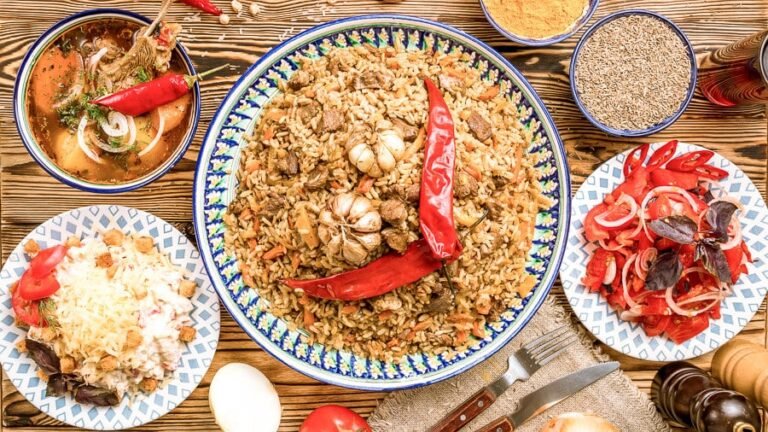Introduction: Why East vs. West Cuisine Still Matters
Food isn’t just sustenance it’s a lens into history, geography, and cultural values. Comparing Eastern and Western cuisine is more than a flavor showdown; it reveals how climate, tradition, and mindset shape what ends up on our plates. As global food culture evolves, understanding these differences enriches our meals and our perspective.
Eastern Cuisine – Harmony in Flavor and Technique
Signature Ingredients and Flavor Profiles
Eastern cuisines spanning East Asia to South Asia are rich in rice, noodles, soy products, seafood, and fresh vegetables. They gravitate toward layered, balanced flavor salt meets umami, sweet meets sour, spiced with aromatics like ginger, turmeric, lemongrass, and cardamom. These ingredients offer a sensory depth that’s nuanced rather than overtly dominant.
Core Cooking Methods: Steaming, Fermentation, Stir-Frying
Techniques like steaming and stir-frying preserve freshness and nutrition. Fermentation creates depth—from Japanese miso to Korean kimchi. These methods align with philosophies of food as medicine and balance.
Presentation, Communal Dining, and Cultural Symbolism
In Japanese cuisine, plate aesthetics are as important as taste—arrangements reflect harmony, seasons, and cultural motifs. Meals are often shared family-style, reinforcing communal bonds through food.
Western Cuisine – Heartiness, Technique, and Structure
Staple Ingredients and Flavor Approach
Western cuisine emphasizes meats, dairy, bread, root vegetables, and potatoes. Flavors tend to center on one dominant note creamy cheese, savory roast, or herb-seasoned butter with herbs like rosemary, thyme, and parsley accentuating the dish.
Cooking Methods: Roasting, Baking, Saucing
Roasting caramelizes; baking crafts breads and pastries; sauces define legacy techniques like French reductions that elevate protein dishes.
Individual Portions, Course-Based Dining, and Fine Dining
Many Western traditions favor sequential courses and individualized plating, highlighting formality and structured progression in dining.
Beyond the Binary: Nuances and Regional Depth
Diversity Within Eastern Traditions
“Eastern cuisine” isn’t monolithic; China alone houses vast regional diversity from fiery Sichuan to delicate Cantonese and refined Huaiyang styles.
Evolution of “Western” Fusion with Asian Influence
Shanghai’s “western food” exemplifies culinary fusion, where expat dishes like pork schnitzel are adapted with soy-hot sauce, borscht meets local spices, or palmiers are infused with sesame or seaweed.
Cross-Pollination and Globalization of Palates
Globalization has blurred once rigid lines. Indian spices show up in Western kitchens; pizza toppings now include durian or chocolate in China. The result? A vibrant culinary diasporic remix.
East vs. West Cuisine – A Comparative Table
| Dimension | Eastern Cuisine | Western Cuisine |
|---|---|---|
| Staple Ingredients | Rice, noodles, soy, seafood, spices | Meat, potato, bread, dairy, mild herbs |
| Flavor Profile | Complex, balanced, layered | Bold, singular, rich |
| Cooking Methods | Steaming, stir-frying, fermentation | Roasting, baking, saucing |
| Presentation & Dining | Aesthetic, communal, symbolic | Structured courses, plated individually |
| Regional Diversity | Vast, culture-rooted variations | European, regional, fusion trends |
| Global Fusion | Adapts and blends (Shanghai style) | Embraces spices and visuals globally |
Pros, Cons & Cultural Reflections
Eastern Cuisine
-
Pros: Balanced nutrition, fermentation benefits, rich communal culture
-
Cons: Complexity in prep, potent spices may challenge new palates
Western Cuisine
-
Pros: Familiar comfort, baking delicacies, soul-warming richness
-
Cons: Can be heavy, sometimes less diverse in spice and flavor layering
Both reflect deeply cultural values from holistic food philosophies to festive indulgences.
Tips for Home Cooks Exploring Both Worlds
-
Start simple—try stir-fried veggies with ginger and soy, or roast root veggies with herbs.
-
Experiment with spices—blend cumin and coriander for Indian warmth, then try rosemary for Western heartiness.
-
Embrace presentation—serve family-style Eastern, then plate a composed Western dish.
-
Mix techniques—steam dumplings, roast vegetables for fusion flair.
-
Infuse fusion thoughtfully—add soy sauce to Western-style marinades or bake buns with Eastern fillings.
Conclusion: A Culinary Bridge Across Cultures
Rather than choosing sides, aim to explore. Eastern and Western cuisines represent complementary philosophies of flavor, technique, and culture. Understanding their differences enriches our culinary creativity and cultural appreciation. Whether you’re drawn to communal harmony or structured indulgence, both worlds offer delicious inspiration.
FAQs
Q1: What defines ‘Eastern cuisine’ and ‘Western cuisine’?
Eastern cuisine typically includes Asian traditions rice, noodles, soy, seafood, layered spices; Western cuisine often focuses on meats, bread, dairy, and techniques like roasting and baking.
Q2: Why are spices more prevalent in Eastern cooking?
Eastern cuisines evolved with spice-rich trade histories (e.g., Silk Road), climate needs, and flavor philosophies, enriching dishes with aromatic complexity.
Q3: How do cooking techniques reflect cultural values?
Eastern steaming and fermentation emphasize preservation and health; Western roasting and baking emphasize texture, richness, and indulgence.
Q4: Are there fusion cuisines blending East and West?
Yes Shanghai’s “western food” localizes expat menus with soy sauce, or desserts like palmiers appear in Chinese bakeries.
Q5: How can I experiment at home with both cuisines?
Start small combine spices, vary cooking methods, play with presentation, and seek recipes that merge techniques, such as roast-style dumplings or herbed rice.
